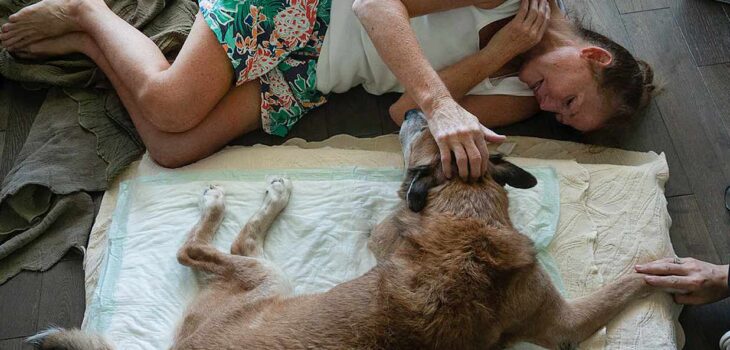 Health
Health
How Professionals Help Children Cope with Pet Euthanasia Services?
The bond between a child and their pet is often deep and unconditional. Pets are more than animals—they are companions, confidants, and, in many cases, a child’s first true friend. When the time comes to say goodbye due to euthanasia, it can be a profoundly emotional experience for children. Helping a child understand this loss requires compassion, honesty, and sometimes, professional guidance.
In Detroit and other communities, veterinarians, child psychologists, grief counselors, and even educators play a crucial role in supporting children through the grieving process. Here’s how these professionals help children cope with pet loss, especially when euthanasia is involved.
- Creating Age-Appropriate Conversations
One of the most important things professionals do is tailor conversations to a child’s age and emotional maturity. For very young children, the concept of death can be abstract or confusing. Professionals avoid using euphemisms like “put to sleep” without explanation, as children may misinterpret these phrases or develop fears around sleep. But only experienced professionals know how to cope with kids during pet euthanasia. For instance, Heartstrings Pet Hospice experts offer pet euthanasia Detroit services and they know the right way to cope with pet during loss.
Instead, they offer age-appropriate explanations, such as:
- “The vet gave our pet a special medicine to stop their pain, and that medicine also helped their body stop working.”
- “We loved our pet very much, and letting them go peacefully was the kindest thing we could do.”
These honest yet gentle explanations help children understand what happened without feeling misled or frightened.
- Providing Emotional Validation
Professionals recognize that a child’s grief is real and deserves acknowledgment. Pet loss is often a child’s first experience with death, and they may feel overwhelmed by sadness, confusion, or even guilt.
Therapists and counselors validate these feelings by:
- Encouraging children to express their emotions through words, art, or play.
- Reassuring them that feeling sad, angry, or confused is completely normal.
- Helping them understand that euthanasia was a loving decision made to end suffering—not something they caused.
This emotional validation can be especially helpful when parents are grieving too and may struggle to fully support their child’s feelings in the moment.
- Offering Structured Grief Counseling
Some children benefit from structured sessions with a grief counselor or child psychologist. These professionals use techniques like play therapy, storytelling, and creative expression to help children process complex emotions.
In Detroit, many veterinary clinics and animal shelters offer referrals to local grief counselors who specialize in pet loss. These services are particularly valuable if a child is experiencing:
- Difficulty sleeping or eating
- Persistent sadness or withdrawal
- Trouble focusing in school
- Anxiety about losing other loved ones
A professional can gently guide children through their grief journey in a healthy, constructive way.
- Helping Families Create Rituals and Memorials
Grief professionals often encourage families to involve children in saying goodbye through meaningful rituals. These might include:
- Holding a small ceremony at home or in the backyard
- Creating a memory box filled with photos, toys, or letters to the pet
- Drawing pictures or writing stories about their pet’s life
- Planting a tree or flowers in memory of the pet
These activities give children a sense of closure and an outlet for their emotions. Professionals can guide families in choosing age-appropriate and culturally sensitive rituals that comfort the child while honoring the pet.
- Supporting Parents in Difficult Conversations
Sometimes, the most helpful support comes not directly to the child, but to their parents. Many professionals, especially veterinarians and grief counselors, offer resources and advice on how to talk to children about euthanasia.
They help parents:
- Decide whether the child should be present during the euthanasia procedure
- Prepare for the types of questions children might ask
- Understand the child’s emotional needs based on their age and temperament
Veterinarians in Detroit like Heartstrings Pet Hospice often provide handouts or online resources about how to approach the topic of pet euthanasia with kids. Some even offer to meet with the child and family beforehand to explain the process in a gentle and supportive way.
- Utilizing Books and Educational Tools
Child therapists and educators frequently recommend children’s books that address pet loss in thoughtful, age-appropriate ways. Titles like “The Tenth Good Thing About Barney” by Judith Viorst or “When a Pet Dies” by Fred Rogers are often used in therapy sessions or read together with parents.
Books can help children:
- See their emotions reflected in a character they relate to
- Understand the finality of death
- Learn healthy ways to remember their pet
Some Detroit-area libraries and schools even offer reading lists or support programs for children dealing with loss, including the death of a pet.
Final Thoughts
Losing a beloved pet through euthanasia is never easy, especially for a child. But with the support of compassionate professionals—veterinarians, counselors, teachers, and parents—children can learn to navigate grief in a healthy way. These experiences, though painful, can also teach valuable lessons about love, loss, and empathy.
In cities like Detroit, where pet ownership is common and families are diverse, having access to professional support makes all the difference. With the right guidance, children can honor their pet’s memory and carry their love forward with strength and understanding.









